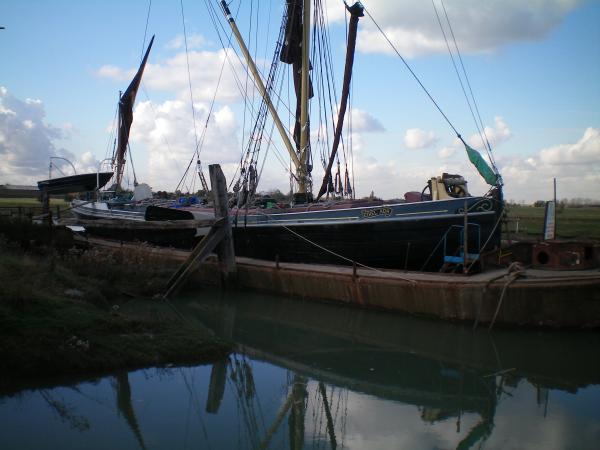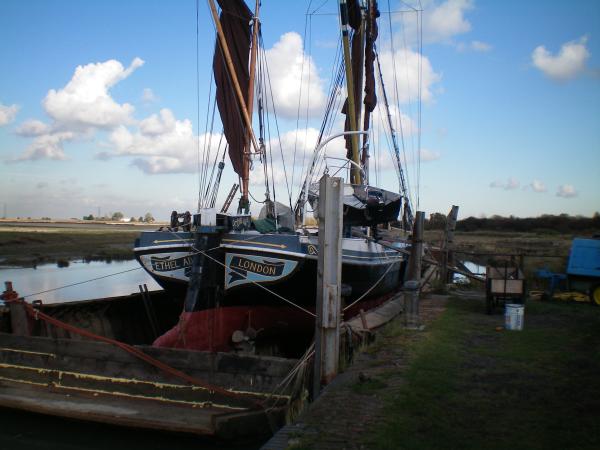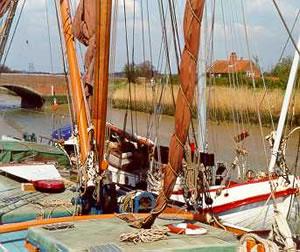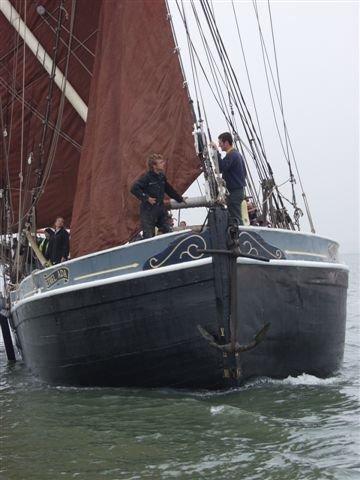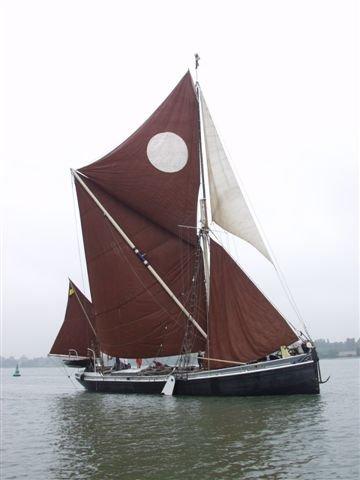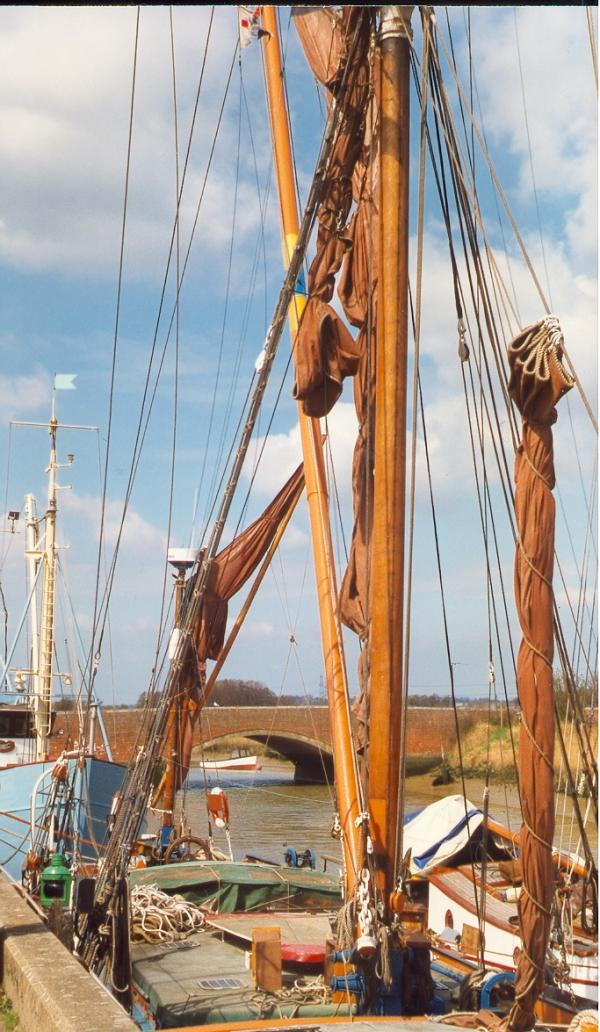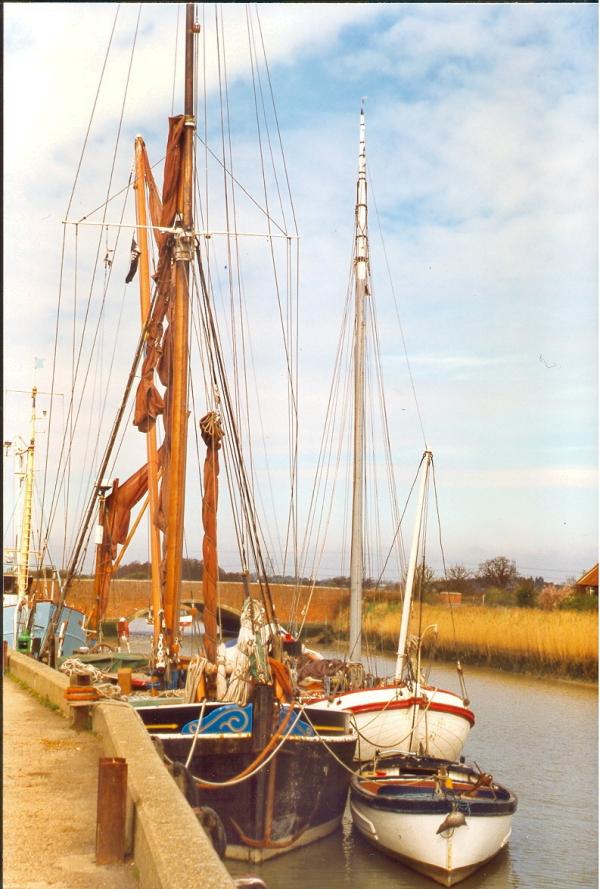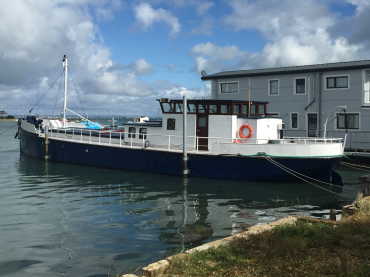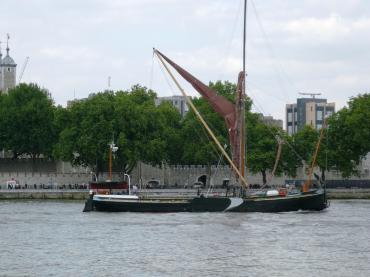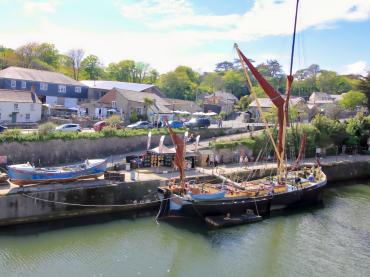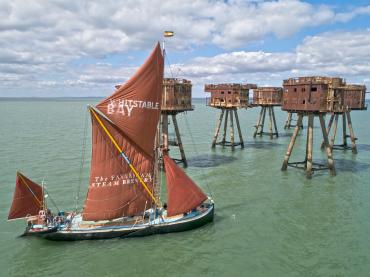

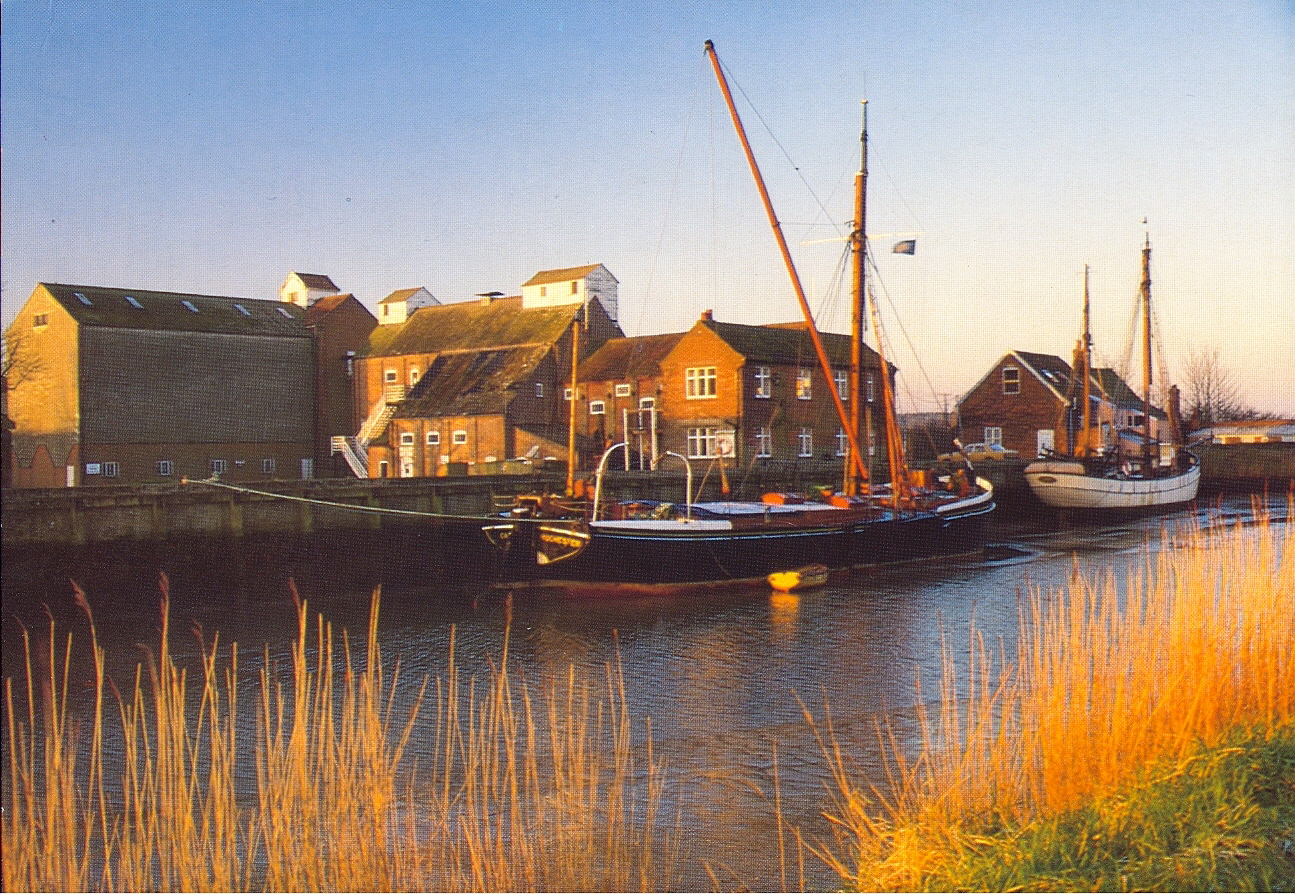
Details
Construction
Dimensions
History
ETHEL ADA was built as a speculation by the Shuttlewood brothers of Paglesham, Essex, one brother building the port side and the other the starboard side, each assisted by one boy; and they named the barge after the ladies in their lives. Construction, in oak with a single skin, started on 15 October 1903 and the barge was launched on 30 July 1904. She was a snug fit in the building shed and to launch her the brothers took the tie-beams out of the roof so that one end of the barge could be jacked up to get the ways under her on a slope.
Whilst under construction she found her first owner in G & A Underwood, coal and corn merchants of Southend, and under their colours won the 1904 Southend match despite an enormous racing spinnaker pulling the topmast out of her during the race.
For wooden boats carrying combustible fuels was potentially hazardous, with fires a constant risk. One such incident occurred on board Ethel Ada in 1910, and was particularly prescient given its future cargo in the Second World War.
The process of loading ETHEL ADA with coke began on Thursday 4 January 1910. A fire in the hold was discovered at 10.30pm the same night, by E. Lankester, the load runner. He told several stokers and the foreman, who sent them to quench the fire with pails and shovels. The foreman also sent for the captain of the barge, who in turn sent for the manager.
A large number of firemen were present on the Quay with pumps, and some were set to removing part of the coke in the hold. The fire was judged to have been extinguished by 12.30am, and the firemen left at 1.30am. The manager then put 5 men of board to cut out any hot places they could find, the men subsequently being paid by the captain.
ETHEL ADA was inspected on Friday morning 4 January 1910 and the all clear was given to resume loading the same afternoon. Loading was finished on Saturday. The owners subsequently sued the coke supplier for the damage caused by the fire. The sum of £80 was finally paid in settlement of the damage caused by the solicitors of the Ipswich Gaslight Company.
This is believed to have been the last Southend match for working barges, although they have more recently been revived. ETHEL ADA was subsequently owned by Samuel West Ltd from 1915, TF Wood Ltd, of Gravesend - carrying gunpowder - from 1938, the Successors to TF Wood Ltd, and finally ICI, before ending trading in 1957. She never had an engine fitted during her trading days, and was sold to private owners in 1958 for a yacht conversion.
Geoff Mellor purchased her in 1969 and lived on board for ten years at Pin Mill whilst also carrying out essential repairs and restoration. During the 1980s, after further restoration work and the installation of a diesel engine, she started a new working life as a cruise barge with accommodation for twelve passengers in four cabins, as well as her skipper, mate and cook, and was based at Snape on the River Alde, Suffolk. Ownership passed to Jed Green, with whom she was a regular competitor in barge matches during the 1990s. In 1999 she was sold to Oliver Price and was refitted and repaired by Webb’s of Pin Mill, leaving there on 1 September 2001 for Maldon to be re-rigged with new running rigging and a new mainsail and mizzen. Ethel Ada left Maldon on 22 October 2001 and arrived at St Saviour’s Dock, London, two days later. She is now based at Hermitage Wharf, Wapping, and charters from Tower Bridge or the east coast ports to sail between the Swale and the Alde. She regularly races in the barge matches: in 2009 she won the Thames coasting class.
Source: Paul Brown, Historic Sail, The History Press.
As of 2025, ETHEL ADA is owned by Tiller & Wheel CIC.
Significance
1. What is the vessel’s ability to demonstrate history in her physical fabric?
Evidence for designs, functions, techniques, processes, styles, customs and habits or uses and associations in relation to events and people. How early, intact or rare these features are may impact on significance.
Spritsail barge ETHEL ADA was constructed in English oak with a single skin and launched on 30 July 1904. She was built in Paglesham and local legend suggests that she may have been partly constructed from the timbers of HMS BEAGLE, Darwin’s famous ship, which found its final resting place in Paglesham Creek. After being sold in 1958 for conversion to a yacht, she was re-rigged and fitted with new running rigging, a new mainsail and mizzen. She operated under sail alone during her trading days, but a diesel engine was installed in the 1980s following extensive conservation work. She was converted for residential use or charter work and a number of small cabins were fitted internally, but these have subsequently been taken out to reveal her original open hold, with new fittings built sympathetically to allow views through the whole boat.
2. What are the vessel’s associational links for which there is no physical evidence?
Associations with people or places. Off-ship research.
ETHEL ADA was built as a speculation by the Shuttlewood brothers of Paglesham, Essex and named after her shipwrights’ wives. She was first purchased by G.& A. Underwood, coal and corn merchants of Southend, but was sold to Samuel West Ltd in 1915, remaining in this ownership until 1938. She was then bought by T.F. Wood Ltd of Gravesend and used for carrying gunpowder, continuing in this trade during the Second World War. For this reason she was not requisitioned for the evacuation of Dunkirk in 1940, and does not appear on the Dunkirk Little Ships Register. She was later owned by ICI before ending trading in 1957 and becoming used as a houseboat. During her life, she took part in a number of barge races, winning the 1904 Southend barge match which is believed to have been the last of its kind there. The 1990s saw her competing again and, in 2009, she won the Thames Coasting Class. She has been recorded on the National Register of Historic Vessels since 1996.
3. How does the vessel’s shape or form combine and contribute to her function?
Overall aesthetic impact of the vessel, her lines, material she was built from and her setting. Does she remain in her working environment?
The primary function of ETHEL ADA was as a cargo carrying barge. The combination of her flat-bottom, wooden carvel construction, leeboards and keelson gave her excellent handling ability along with generous load capacity of more than 100 tonnes. Her design and rig allowed her to be operated by only a man and a boy, and her sprit became a useful crane for handling cargo once her sails were stowed. Her shallow draught allowed her to navigate far inland to rural harbours. As a spritsail barge with red ochre sails she is elegant, graceful and a pleasing sight. ETHEL ADA is now based at Hermitage Wharf, Wapping, and charters from Tower Bridge or the east coast ports to sail between the Swale and the Alde, in the waters where she historically operated.
Source: NHS-UK team, 27 October 2016
This statement was developed as part of the Heritage Lottery funded First World War project. http://www.ww1britainssurvivingvessels.org.uk/
Key dates
-
1903
Vessel built by Shuttlewood Brothers in Essex
-
1904
Won the 1904 Southend Barge Match under the colours of her first owner, G & A Underwood of Southend
-
1915
Under ownership of TF Wood Ltd, of Gravesend, and used to carry gunpowder
-
1958
Sold to private owners for yacht conversion
-
1980s
Vessel underwent further restoration work and had a diesel engine installed and started working life as a cruise barge
Grants
-
October 2012
Grant withdrawn due to the vessel being up for sale. Source: National Historic Ships UK
-
September 2012
A Sustainability Grant of £1000 towards the cost of remedial work was made from the Strategic Development Fund of National Historic Ships UK. Source: National Historic Ships UK
Sources
Carr, Frank, Sailing Barges, 1971
Perks, Richard Hugh, Sprts'l: A Portrait of Sailing Barges and Sailormen, Conway Maritime Press, 1975
Society for Spritsail Barge Research, The Last Berth of the Sailorman, 1987
Wood, D G, Barges Sailing Today: Sailing Barge Information Pamplet No: 1, Society for Spritsail Barge Research, 1995
Classic Boat: Medway Barge Match, pp15, August 2010
Own this vessel?
If you are the owner of this vessel and would like to provide more details or updated information, please contact info@nationalhistoricships.org.uk

